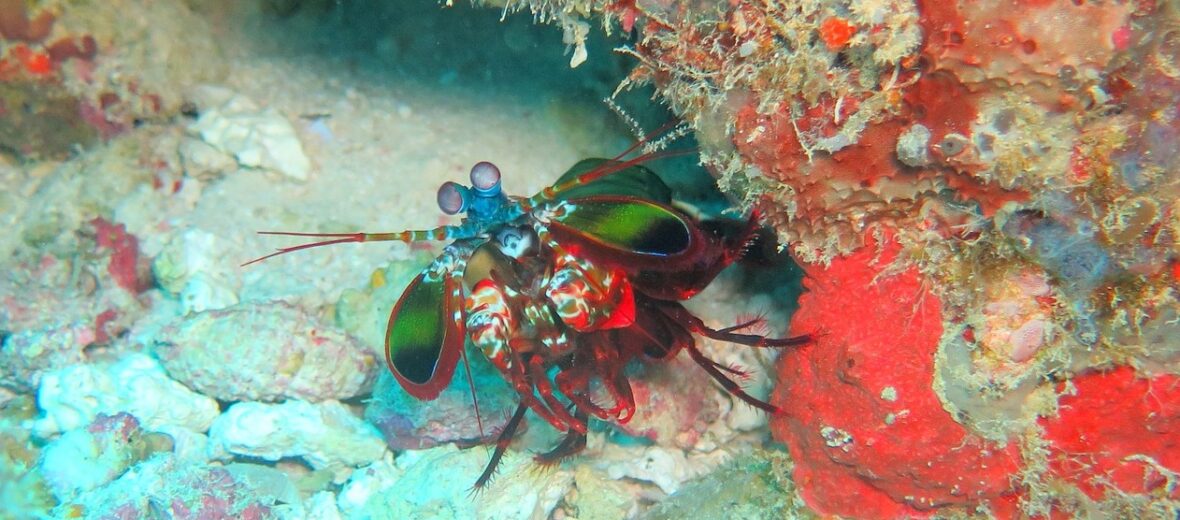
The peacock mantis shrimp, aka “thumb-splitter”, is a small, defensive marine crustacean that lives in tropical and subtropical waters of the Pacific and Indian oceans from Hawaii to Eastern Africa. They are part of the same family as lobsters, crabs, shrimp, crayfish, and krill. There are 450 known species of mantis shrimp. This one in particular is the most beautiful. These critters pack a punch and have incredible eyes to boot.
First the Stats…
Scientific name: Stomatopoda
Weight: Up to 3.25 ounces
Length: Up to 7 inches
Lifespan: Up to 20+ years
Now on to the Facts!
1.) Mantis shrimp species, as a whole, can be divided into 2 categories: smashers or spearers; based on their claws and how they hunt. The peacock mantis shrimp is a smasher.
2.) Even though they are called shrimp, they are actually a member of the Stomatopoda family.
3.) Not only are they famous for their wallop of a punch, but they also have amazing eyes. Their eyes rest on independent stalks and have trinocular vision. This allows them to see in on objects with 3 separate regions.
4.) They are able to see a special type of spiralling light called circularly polarized light.
5.) Due to their polarized vision, researchers at the University of Queensland believe that they are able to detect cancer cells, as cancer cells show under a different light spectrum than healthy cells.
But wait, there’s more on the peacock mantis shrimp!
6.) Mantis shrimp have a whopping 12 – 16 color receptors in their incredible eyes. This is 3x more than that of the human eye.
7.) Their punch is so quick that it results in what are called ‘cavitation’ bubbles. This is a super heated bubble which emits a small flash of light, which for a split second also generates temperatures of up to 7,952°F! This is nearly as hot as the sun, in the surrounding water!
Did you know…?
The peacock mantis shrimp earned it’s nickname due to the fact that it can punch its victims, with its dactyl clubs as fast as a .22 caliber rifle! These fists of fury are spring loaded and able to accelerate, from a resting position, to over 50 mph, delivering a force of over 1,500 newtons! That’s enough to smash through even the toughest crab and clam shells.
8.) Much to the disdain of new fish hobbyists, these shrimp have punched holes in aquarium glass while excavating and hunting.
9.) How do they keep their dactyl clubs from cracking under the force of a strike you ask? This is due to shock absorbers called elastic polysaccharide chitin.
10.) Peacocks and other mantis shrimps are monogamous and can stay with the same partner for up to 20 years.
Now a Short Peacock Mantis Shrimp Video!
Also, check out the Critter Science YouTube channel. Videos added frequently!
Want to suggest a critter for me to write about? Let me know here.




Leave a Reply